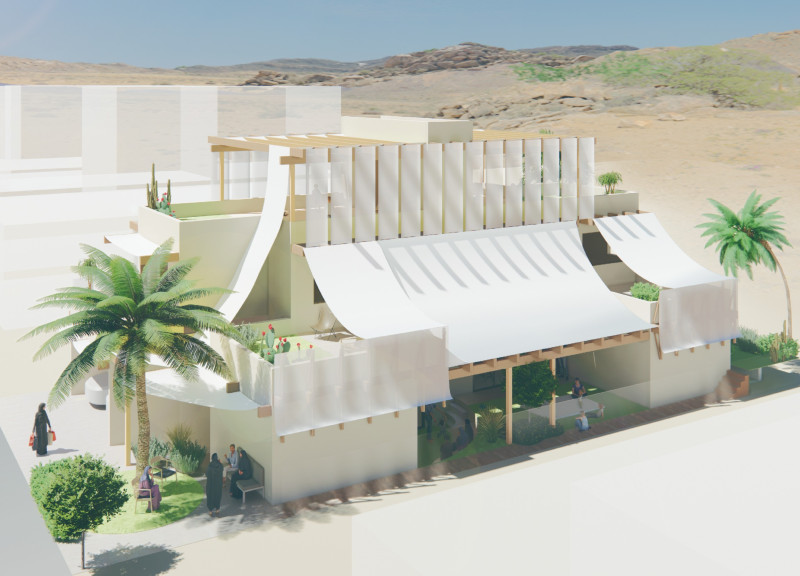5 key facts about this project
From a general perspective, the project is a reflection of its geographical context, deeply rooted in the local cultural and environmental characteristics. The design narrates the story of its location, embracing the natural landscape while integrating seamlessly with the urban fabric. Throughout the structure, one can observe an intentional dialogue between the built environment and its surroundings, which enhances the overall user experience and fosters community connection.
At the core of the design are several distinctive elements that exemplify innovative architectural thinking. The overall layout prioritizes open spaces, allowing for flexibility and adaptability. This feature supports the variable functions of the facility, accommodating diverse events ranging from community gatherings to educational workshops. The spatial arrangement encourages natural movement and interaction, making it user-friendly and inviting for individuals of all ages.
The materiality of the project is another fundamental aspect worth noting. A careful selection of materials has been employed to balance aesthetic appeal with sustainability. Predominantly, the project utilizes locally sourced timber, glass, and concrete. The timber brings warmth and texture, contributing to the project's inviting atmosphere. Large glass panels are strategically placed to maximize natural light, promoting energy efficiency while creating a harmonious connection between indoor and outdoor spaces. Concrete elements offer structural integrity and permanence, grounding the design within its environment.
The architectural ideas evident in this project echo contemporary sustainability trends, with features such as green roofs and permeable pavements incorporated into the design. These elements enhance ecological performance while addressing urban challenges such as stormwater management and biodiversity. Integrating nature into the urban landscape not only supports environmental stewardship but also enriches user experience by providing therapeutic spaces for relaxation and reflection.
Unique design approaches can be seen in the project's façade treatment, which showcases a modern interpretation of traditional design motifs. This thoughtful integration of cultural references serves to bridge the gap between history and modernity, reflecting the community’s heritage while looking towards the future. The façade is adorned with a series of sculptural elements that create dynamic play of light and shadow throughout the day, enhancing visual interest and inviting curiosity.
A notable aspect of this project is its commitment to enhancing social interaction. Public spaces are abundant and thoughtfully designed to encourage people to gather and engage with one another. Whether through informal seating arrangements or multi-functional areas meant for exhibitions, the design prioritizes community as a focal point, underpinning the belief that architecture should serve as a catalyst for social cohesion.
As one delves deeper into the architectural plans and sections, it becomes evident how each design decision has been made with meticulous consideration for the user experience and environmental factors. By reviewing the architectural designs, one can appreciate the finer details and intentions that shape this project, revealing layers of thoughtfulness that may not be immediately evident at first glance.
This architectural project stands as a testament to the potential of good design to impact communities positively. By understanding and analyzing its components, one gains insight into the integral role architecture plays in fostering connections and enhancing the quality of life. For those interested in exploring this project further, it is highly recommended to examine the architectural presentation materials, including plans, sections, and visual representations, to grasp the full narrative woven throughout this remarkable design.


























